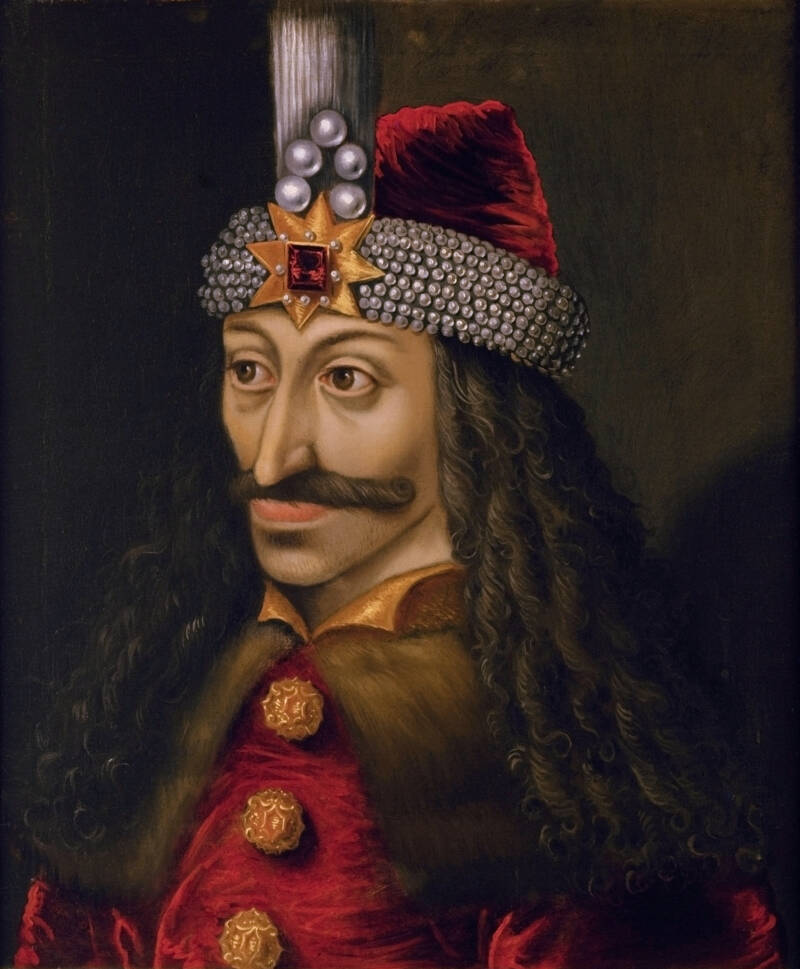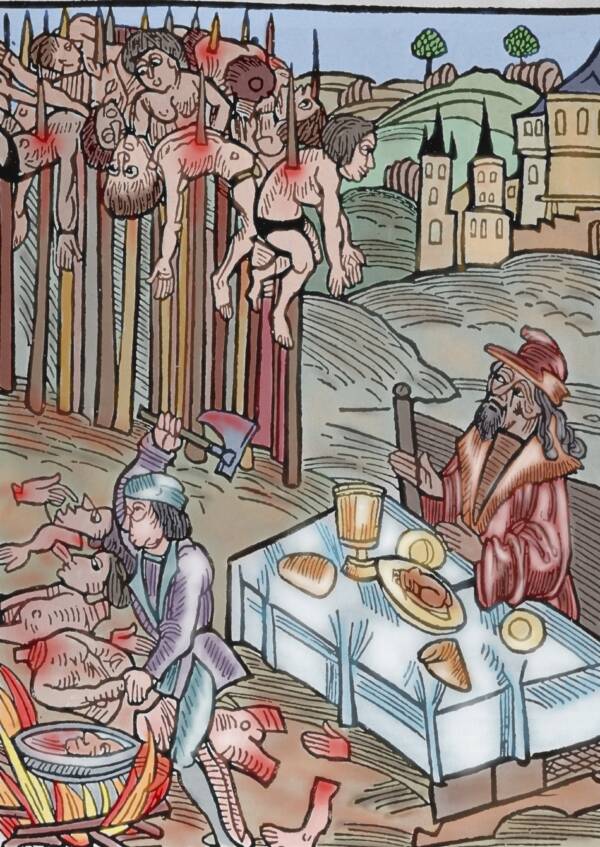Vlad The Impaler — The Wallachian Ruler Who Impaled Over 20,000 People

Public DomainVlad the Impaler, or Vlad Tepes in Romanian, returned from Ottoman imprisonment as a bloodthirsty, violent ruler.
When Vlad III returned to Wallachia in 1448 to find his father dead and a new ruler on his throne, he showed just how violent his time spent imprisoned by the Ottomans had made him.
After a back-and-forth acquisition of power, Vlad III secured his father’s throne in 1456, allegedly personally beheading his rival, Vladislav II, on the battlefield.
But not all of his subjects celebrated his return to power; uprisings sprung up in villages across the region. In response, Vlad invited some of his detractors to a banquet.
At the banquet, his guests were treated to being stabbed to death and impaled on spikes, their bodies then put on display as a warning to other dissenters.
And Vlad the Impaler was born.

Prisma/Universal Images Group via Getty ImagesA Germanic illustration depicting Vlad the Impaler as he watches an impalement from a table, having his lunch and drinking wine.
The name was certainly deserved, as well. During his reign, over 20,000 people wound up decorating the infamous stakes that were publicly displayed for all to watch the gruesome, slow deaths.
To understand the full picture: When a person was impailed, a wooden or metal pole was driven into their body either through their rectum or vagina. It was pushed through until it jutted out the person’s other end, either from their mouth, shoulders, or neck.
There were also instances where the pole was rounded, not sharp, so that it wouldn’t puncture the victim’s internal organs. The end result was a particularly painful, prolonged death.
Of course, impalement wasn’t Vlad’s only torturous trick.
He once ordered for the turbans of Ottoman diplomats to be nailed onto their skulls after they’d declined to remove them. He also, allegedly, dipped his bread in the blood of his victims.
In the end, he was beheaded in battle, his head given to his enemy, Sultan Mehmed II of the Ottoman Empire, to be displayed over the city gates.
No one has ever found his remains.





